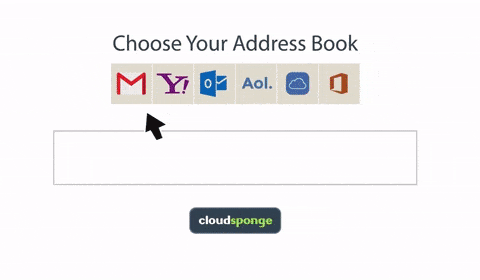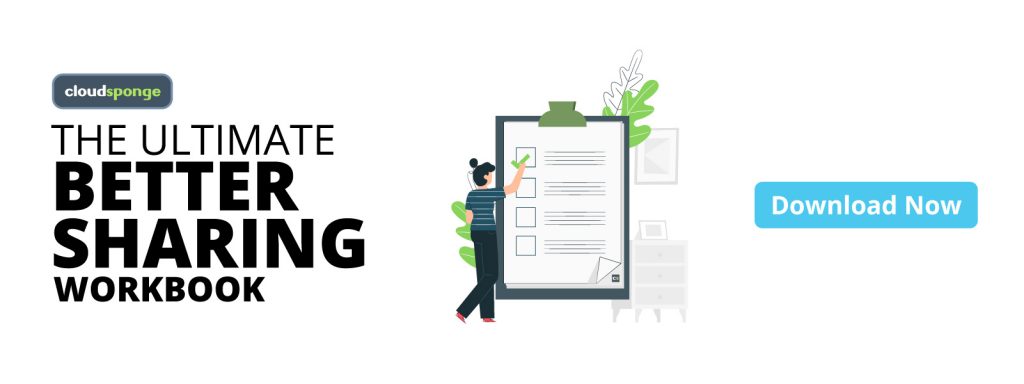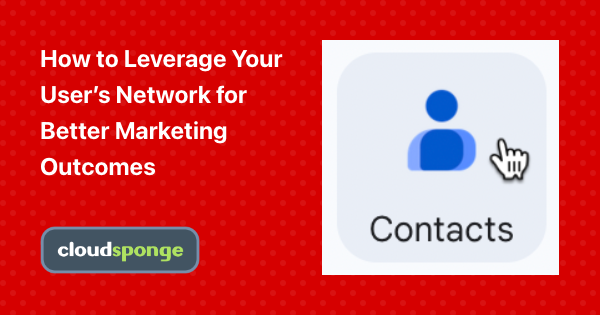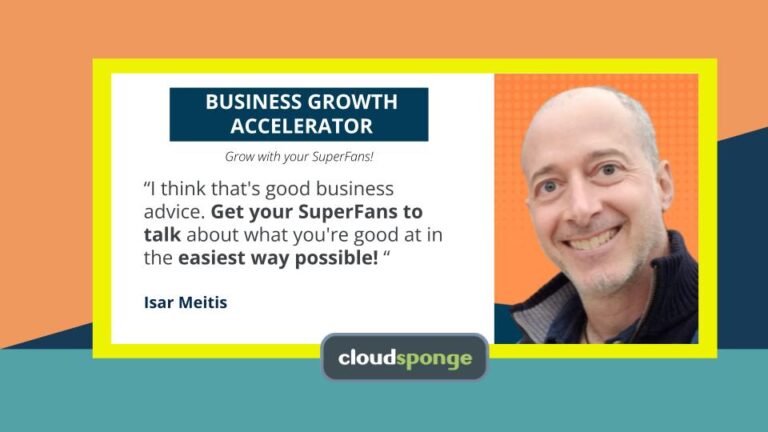
Referral marketing is a marketing strategy that encourages existing customers to refer new customers to your business. When a new customer signs up using a referral link or code, the referring customer is rewarded with a discount, free product, or other incentive.
Referral marketing campaigns are a type of referral marketing that is specifically designed to generate new leads and customers. These campaigns typically involve offering a special incentive to customers who refer new people to your business.
An effective website combines form and function to give visitors a unique experience. Successful online businesses choose layouts, fonts and color schemes with great care, and they also make sure that their sites are usable and easy to navigate.
A gorgeous online store with breathtaking photos and engaging descriptions will not generate many sales if checking out is a chore. Similarly, refer-a-friend campaigns are unlikely to succeed if the form customers are presented with is poorly designed.
In addition, overlooking user experience about your products, services or brands, otherwise known as UX, is a pitfall that even experienced web designers sometimes fall into. This article was written to help you avoid it and give you tips and ideas to grow your business through an effective referral marketing program.
The easiest scorecard to evaluate your website's sharing experience is here! Download The Better Sharing Workbook Now!
Drive Business with a Referral Marketing Program
Because nine out of ten shoppers trust peer recommendations, a figure much higher than traditional advertising gets, there are more marketing leaders who are changing over to trust-based marketing. As a result, these newly adopted marketing techniques continue to reach new heights.
Of these marketing techniques, the proven strategy that brings in the most loyal customers for top brands is referral marketing.
Referral marketing is basically a way of encouraging happy customers to spread the word, and it can be extremely effective. For example, when the research firm Nielsen evaluated advertising techniques, 84% of the surveyed consumers said they trusted word-of-mouth recommendations the most.
The evidence suggests that the leads generated by a well-run referral marketing campaign will be far more likely to buy than visitors who click on ads or learn about websites from search engines.
Using Referral Marketing to Build a Market Leader
Word-of-mouth promotion can be a potent marketing tool. Take men’s grooming product company Harry’s, for example.
Harry’s digital store just keeps on expanding, and with the help of their long-standing partners, they are on track to bring their products to around half a million people this year.
So how did the company get to be a market leader in their niche? One main thing that is key to the shaving company’s success and growth is its referral marketing program. When they were starting up, Harry’s founders Jeff Raider & Andy Katz-Mayfield, believed that the most effective and powerful way to build their grooming brand was via credible referrals.
Knowing that they focused on a milestone referral campaign that helped friends spread word of mouth about their products instead of spending millions on Google and Facebook advertising. Using a clear and simple-to-use referral form, Harry’s managed to gather 100,000 emails in a single week. That’s pretty amazing when you think about it!
Double the performance of your referral programs in 3 easy steps Download our DIY Workbook today
The Best Strategies for Referral Marketing
Harry’s email referral campaign led to some pretty amazing referral mechanics. But, unfortunately, not every referral marketing program is as successful as Harry’s.
That doesn’t have to be the case, however. We’ve listed six effective elements you can use in your email referral campaign strategy to optimize your chances of success.
1. Build Awareness Around Your Referral Campaign
A referral marketing campaign needs to be introduced and promoted by your business for it to work. This strategy, of course, is intuitive because if there is no awareness surrounding your program, it’s not likely that customers will discover it—let alone act on it. You need to drive attention to your referral pages, rewards, and programs to drive more referrals for your business.

So, just how do you build awareness around your referral campaign? First, place it where users can locate it the easiest.
Here are a few ideas that can assist with this:
- Make it eye-catching on your website or even on your merchandise, if that’s possible.
- Add a small badge to your website and to channels for your social platforms.
- Mention it in all email marketing communications you send out.
- Feature the program on any relevant landing pages that encourage customer engagement (e.g., lead generation, selling products)
- Attach the referral to emails with permanent links—perhaps in the footer of your newsletters. Or provide a link to shopper support via email signatures.
- If your CRM allows it, design a segment that shows how your interested customers interact. Then, provide automated emails informing top shoppers about the referral initiative.
- If you can, make the campaign an integral part of your social media bios.
- Running ads on your socials can give your campaign some extra mojo too. As an example, Google uses Facebook advertising to promote referral initiatives for their Workplace (formerly G Suite).
The aim is to place referral marketing front and center for potential customers so they’re aware of the campaign and can act on it.
The more aware customers become of your referral marketing campaign, the greater its chances for success.
Find the Level of Awareness You Need
So, just how much awareness is enough? There’s no hard-and-fast rule here, but you’re looking to raise customer awareness at least ten times higher than the number of people who are set to receive referral emails.
For example, if you’re planning on sending outreach to 100 customers, ensure that at least 1000 people are aware of your program. Also, if more than one person intends to refer a friend—and they will need this information to do so—you want as many eyes on the program as possible before someone shares it with a friend.
Once your campaign becomes self-sustaining, you can taper off the promotional efforts. Still, it’s best to continue some degree of promotion until then—at least for maximum awareness-building purposes.
For example, keep promoting the referral program on social media even though customers actively share with friends and encourage new signups every day.
2. Elevate the UX
If you want your referral marketing campaign to succeed (and who doesn’t?), the UX must be top-notch. Referred customers are more likely to stick around and become long-term customers if they have a great user experience every time.
Their exposure to using your email marketing initiative will also make a difference in whether they send the referral or not.
Unfortunately, a bad experience will likely put off referrers and recipients alike. A murky call for action, meandering email content or a clunky referral process can all lead to potential referrals not being sent.
For instance, take this referral email copy below. We can almost guarantee that most customers would consider writing a message recommending your brand too much trouble.

It’s better to make sure the user experience is straightforward for referrers and their recipients. This action will help ensure that both parties have a positive experience with your referral marketing campaign.
The correct elements can improve the UX and increase email referrals. So which ones affect a referral campaign’s UX? As mentioned, ones that are a lot of trouble to use can adversely affect the experience of using your email referral program.
In other words, people need to find the necessary ‘stuff’ to easily and quickly take action on your referral campaign. Therefore, they should get through the task without taking too many steps.
Eliminate Sharing Roadblocks to Improve the UX
If you want to improve the user’s experience with your product, services, and brand, you need to eliminate some elements from the process immediately.
- Stop letting your customers draft email referral copy themselves. Instead, preload messages into your referral link so your users can share within seconds.
- Personalise your message with sender or recipient details for optimum engagement.
- Don’t force your customers to manually put in the recipient’s emails. This is unnecessary labor that hampers your user’s sharing experience.
- Use a tool like the CloudSponge Contact Picker. This adds an ‘Add from Address Book’ option to your sharing interface – essentially allowing your users to import contacts using a preferred address book to input emails instead of typing them in manually. This way, they can send out referrals with a minimum of clicks.
You can embed address books from Yahoo, Outlook, and even AOL with it. Once you have it installed, it goes to work on amplifying your fans and increasing referrals, thereby boosting your word-of-mouth sales.
Don't be stuck on a referral program that does not work, Sign up for a FREE 14 Day trial today!
3. Thoroughly Understand Data-Driven Customer Insights
Developing a thorough understanding of the customer’s behavior that is derived from good, relevant data, uncovers insights that drive other elements of the referral program. We recommend asking the following when looking into and determining what entices customer engagement and referrals the most:
- What is the best message to attract your customers to the referral program?
- How can I make the referral campaign more relevant to them? Likewise, what would engage the recipients of the referral?
- What is the best place to host the program – where customers can find it?
- What incentives would likely get them to take action?
- How do my customers mostly communicate with their family & friends? If you have this data, you could then focus on sharing only the most applicable sharing channel details.

Where to Find the Date You Need For Customer Insights?
Where you look for insight data is going to depend largely on your type of business. For example, if you manage a software or SaaS business, utilizing the log data will probably get you the insight you need.
You’ll find tons of data about how your shoppers interact with your products or services there. In these cases, apps like Kissmetrics and Intercom can deliver a great deal of related insight.
Your CRM can provide data on shopper interactions too. While looking, you’ll likely discover data about what motivated users during sales and after-sales exchange. It will also provide data for when customers received support.
4. Use Convincing Content For Your Message
Inarguably, content is a supreme marketing element. But for it to work, it must engage, persuade and motivate someone who doesn’t know you into trusting you and clicking your email referral link.
Unfortunately, that’s not easy to do, especially considering people’s growing negative attitude towards emails from unknown sources and their growing skepticism towards marketing in general.
Fortunately, there are various persuasive techniques you can rely on that can help companies achieve success in the referral copy realm. We’ve described some of the most effective methods in the post you can check out here: Optimizing the Friend Invitation Process.
To go over things again, some of the most effective techniques in the post include:
- Evoking interest
- Using social proof
- A sweet deal
- A sense of urgency
5. Use Incentives
Incentives are a tried and tested way to increase referral program participation. They work because they offer customers an immediate benefit for referring friends. The most common motivator is offering customers discounts, free products or services, or even cash in exchange for referrals.
There’s no one-size-fits-all answer when it comes to incentives, as there are a lot of factors to consider for each unique referral program. What works well for one company may not work at all or even be counterproductive in another context.
Bear in mind that offering referral incentives is not the same as buying new customers. A good referral incentive should reward brand advocates for their hard work in spreading the good word about your product. In addition, it must also make good sense for a company and not detract from its bottom line.
6. Use a System to Track Progress
Without good insight into your campaign’s progress, any results you’ve generated may be dumb luck. You’ll need to change over to using a system to track progress, so you’re not leaving a strong marketing technique such as email referrals to chance.
One of the first things you should notice when you start tracking is that your referral programs are building in scale.

The next thing that will probably happen next is that your program starts to engage thousands of customers. Growth, of course, is a welcome challenge. Still, with that, you’ll suddenly find yourself suddenly facing a whole new set of challenges, such as being able to deliver on the incentive you promised or knowing what obstacles users see when they try to spread the word about your brand.
Meanwhile, you must be able to deliver incentives you’ve sold customers on. You also need to know about those obstacles referrers are finding.
To overcome these challenges, you must develop a system that tracks the progress of your referral program. The task can be intimidating, and the most challenging part is typically deciding which referral program metrics make sense to follow.
We’ve posted a list of the ones we’ve found that make a program a success that you can read about on the blog.
For a quick recap, you should, at the very least, track the following:
- Rate of participation
- Share rate
- Reach and impressions
- Conversion rates
Best Practices for Referral Forms
Now that you know the critical elements of a referral marketing program, let’s move on to the best practices for referral forms.
If you want to turn your existing clients into a consistent source of new leads, you will need a website form that they can use to refer their friends. However, knowing how to create a refer-a-friend form is only half the battle.
Therefore, if you want to run a successful referral marketing campaign, you need to do more than simply asking your customers for referrals. One way to get the form to work well is to design it with UX in mind.
Also, you’ll need to know what makes a form more user-friendly than another. For instance, the best refer-a-friend form should be accessible, attractive and extremely easy to fill out.
A good form avoids using jargon and asks only for the information needed. If you can provide some value or incentive in exchange for referring a friend or customer, then the form will be even more effective at getting results.
The best and easiest-to-use referral forms should do the following.
1. Use a Trust Indicator
The less secure a site appears, the less likely customers will be to leave their information or complete transactions on it. Therefore, ensure that you have an SSL certificate and address bar, so your visitors know they are safe when using your referral program form.
2. Ask as Little as Possible
Less is more when it comes to online forms. Forms that ask too much and gather seemingly unnecessary information frustrate users, which is what you are trying to avoid. Ask only for the information you will need to reward the referrer and work the lead they provide.
3. Highlight the First Field
Making the first field a slightly different color can create a visual anchor that improves UX. When referrers click on the first field, its color should change back, and the second field should be highlighted. Doing this also lets your customers know that you are trying to make things easy for them.
4. Conditional Formatting
For best results, your form should have autocorrect or prefill capabilities. For instance, when customers enter an incorrectly formatted email address, your referral form should politely tell them they made a mistake.
5. Keep the Form Simple
Using multiple columns on a form is typically a mistake. Instead, try to have all of your form fields in a single column with a submit or send button at the bottom. Complexity is your enemy and will impact your results.
6. Make the Form Responsive
Your form should be simple, compact, and easy enough for anyone to fill out. It also means making sure your referral forms work on mobile devices too! Ensure that your form renders legibly and correctly on all screen sizes and in all browsers.
7. Make the Submit Button Stand Out
The button your customers click to send their information should be large, bright and impossible to miss.
8. Keep Pages Short and Sweet
It’s always a good idea to keep your forms short and to the point. Avoid asking for extraneous information. If you can’t make the page any shorter, go for simple visual content.
9. Minimize Required Time and Effort
This step is especially important in referral forms because you have to ask for personal information. In addition, asking people to constantly use the mouse to click and tab over when filling out a form can be overwhelming and cause them not to want to complete it.
If your customers see fields on a form asking for information that isn’t needed, it can be a time vacuum and a lesson in frustration. The best forms place labels next to or below their corresponding fields.
10. Mark Fields as Required or Optional
Placing a red asterisk next to required fields is the most common way to do this, but you may be better off marking optional fields if most of the information is required. If you do this, use the word “optional” rather than an asterisk.
Make Sharing Easy with CloudSponge
No matter how carefully you design your form, copying email addresses from contact lists and pasting them into your form could still be a hassle for your customers. To make things easier for them and improve your site’s sharing experience and chances of a successful conversion, try using what we mentioned earlier: the CloudSponge Contact Picker. Here is how it works:

- Your customer clicks an “Add from Address Book” button on your referral form.
- When they click on the button a list of all of the main email providers including Google, Yahoo and Outlook appears.
- When your customer clicks on an email provider, they will see a drop-down list of their contacts.
- Your customer then checks the box next to the contacts they wish to refer to or choose to “get all contacts.”
- The CloudSponge contact picker automatically fills in the email address and extracts first and last names to personalize your referral email.
Let CloudSponge Help You Build Your Brand and Increase Customer Referrals
CloudSponge has been improving the performance of e-commerce websites for more than 10 years, and we are trusted by some of the biggest names in tech like GoFundMe, Lyft and Yelp. If you want to build your brand and get more customer referrals, you can see our solutions in action by requesting a free demonstration.
 Frequently Asked Questions
Frequently Asked Questions
How do Referral Programs Work?
A referral program is a marketing strategy that relies on customers to promote your brand through personal recommendations. Instead of leaving online reviews or responding to feedback surveys, referral programs enable customers to share their positive brand experiences with their partners, colleagues, and friends through word-of-mouth.
Why do Referral Programs Work?
Referral programs work because they tap into the power of personal relationships and trust. When someone refers a product or job candidate to their friends, family, or professional network, it is often seen as a personal recommendation based on their positive experience or personal knowledge of the candidate.
How do I Promote a Referral Program?
To promote a referral program, businesses can send emails to existing customers or employees, share program information on social media, optimize their website, offer exclusive incentives, use targeted ads, encourage word-of-mouth promotion, and ensure the referral process is easy to participate in.
How do I Start a Referral Program?
To start a referral program, businesses should define their goals, choose incentives, develop program rules, promote the program, track and measure results, and continuously optimize the program based on feedback and results
Is Referral Marketing Paid Advertising?
Referral marketing is not the same as paid advertising. While paid advertising involves paying to promote your products or services to a broad audience, referral marketing relies on word-of-mouth recommendations from satisfied customers to generate new business.
What is Referral Marketing Software?
Referral marketing software is a type of software platform designed to help businesses create and manage their referral marketing programs. Referral marketing software typically includes features such as customizable referral program design, integration with a contact picker, automated referral tracking, incentive management, and reporting and analytics.
How do You Create a Referral Strategy?
To create a referral strategy, identify your target audience, set goals and objectives, choose a referral incentive, determine the referral process, create a landing page, promote the referral program through various marketing channels, and track and measure the program’s results using analytics and tracking tools.




